An injectable hydrogel can mitigate damage to the right ventricle of the heart with chronic pressure overload, according to a new study published March 6 in Journals of the American College of Cardiology: Basic to Translational Science. The study, by a research team from the University of California San Diego, Georgia Institute of Technology and Emory University, was conducted in rodents.
Tag: Jacobs School Of Engineering
Working Towards Toxic-Free AI
Unlike existing work, which relies on training data from social media examples, a new benchmark, named ToxicChat, is based on examples gathered from real-world interactions between users and an AI-powered chatbot. ToxicChat is able to weed out queries that use seemingly harmless language but are actually harmful, which would pass muster with most current models.
Type 2 Diabetes Alters the Behavior of Discs in the Vertebral Column
Type 2 diabetes alters the behavior of discs in the vertebral column, making them stiffer, and also causes the discs to change shape earlier than normal.
How to Run a Password Update Campaign Efficiently and With Minimal IT Costs
Computer scientists found that email notifications to update passwords potentially yielded diminishing returns after three messages.
These Robots Helped Understand How Insects Evolved Two Distinct Strategies of Flight
Robots built by engineers at the University of California San Diego helped achieve a major breakthrough in understanding how insect flight evolved, described in the Oct. 4, 2023 issue of the journal Nature. The study is a result of a six-year long collaboration between roboticists at UC San Diego and biophysicists at the Georgia Institute of Technology.
These Screen-printed, Flexible Sensors Allow Earbuds to Record Brain Activity and Exercise Levels
Earbuds can be turned into a tool to record the electrical activity of the brain and levels of lactate in the body with two flexible sensors screen-printed onto a flexible surface.
New Technology Turns Smartphones into RFID Readers, Saving Costs and Reducing Waste
Imagine you can open your fridge, open an app on your phone and immediately know which items are expiring within a few days. This is one of the applications that a new technology developed by engineers at the University of California San Diego would enable.
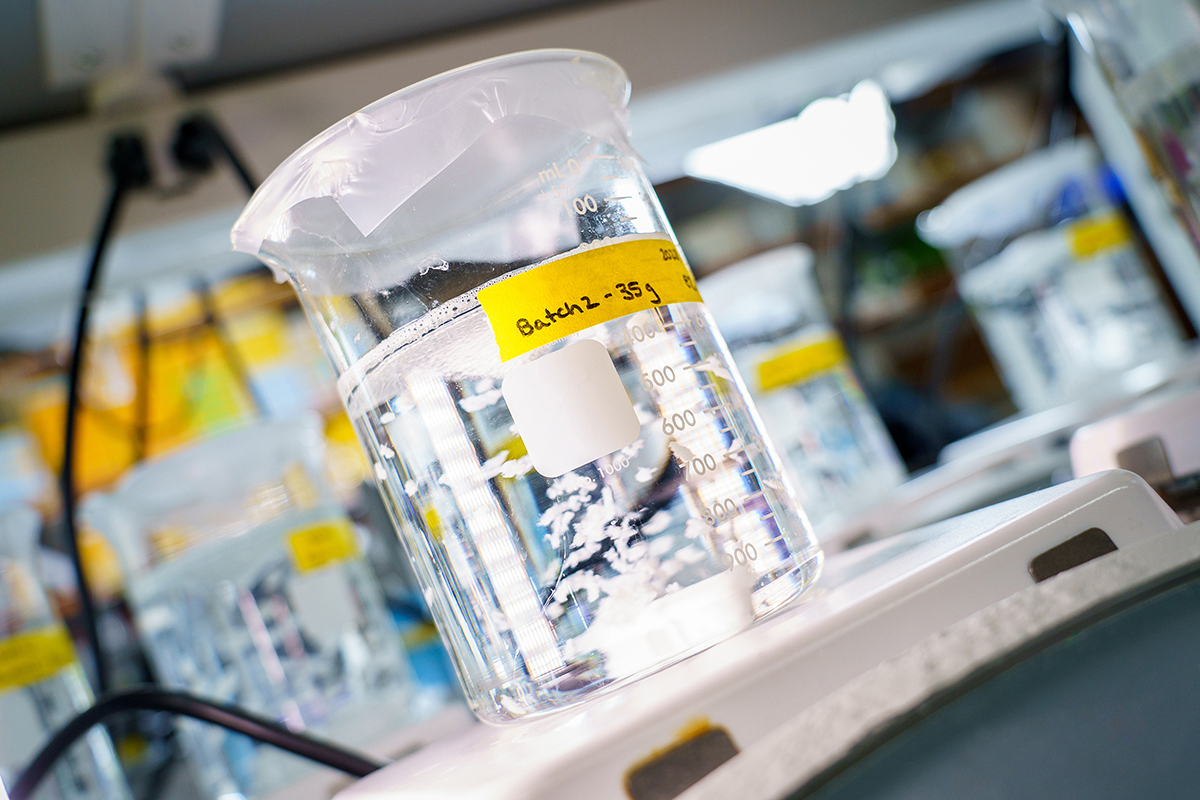
This Groundbreaking Biomaterial Heals Tissues From the Inside Out
A new biomaterial that can be injected intravenously, reduces inflammation in tissue and promotes cell and tissue repair. The biomaterial was tested and proven effective in treating tissue damage caused by heart attacks in both rodent and large animal models. Researchers also provided proof of concept in a rodent model that the biomaterial could be beneficial to patients with traumatic brain injury and pulmonary arterial hypertension.
New Web Tracking Technique is Bypassing Privacy Protections
Two years ago, several browsers that prioritize user privacy — including Safari, Firefox, and Brave — began to block third-party cookies for all users by default. Advertisers have responded by pioneering a new method for tracking users across the Web, known as user ID (or UID) smuggling, which does not require third-party cookies. But no one knew exactly how often this method was used to track people on the Internet.
Innovative Self-Powered Ingestible Sensor Opens New Avenues for Gut Research
Engineers developed a battery-free, pill-shaped ingestible biosensing system that gives scientists the ability to monitor gut metabolites in real time, which wasn’t possible before. The work could lead to a new understanding of intestinal metabolite composition, which significantly impacts human health.
Nanoengineers Develop a Predictive Database for Materials
Nanoengineers at the University of California San Diego’s Jacobs School of Engineering have developed an AI algorithm that predicts the structure and dynamic properties of any material—whether existing or new—almost instantaneously. Known as M3GNet, the algorithm was used to develop matterverse.ai, a database of more than 31 million yet-to-be-synthesized materials with properties predicted by machine learning algorithms. Matterverse.ai facilitates the discovery of new technological materials with exceptional properties.
The physics of walking is simpler than we thought
The physics of walking for multi-legged animals and robots is simpler than previously thought. That is the finding described by a team of roboticists, physicists and biologists in the Sept. 5 issue of the Proceedings of the National Academy of Sciences, in a paper titled “Walking is like slithering: a unifying, data-driven view of locomotion.”
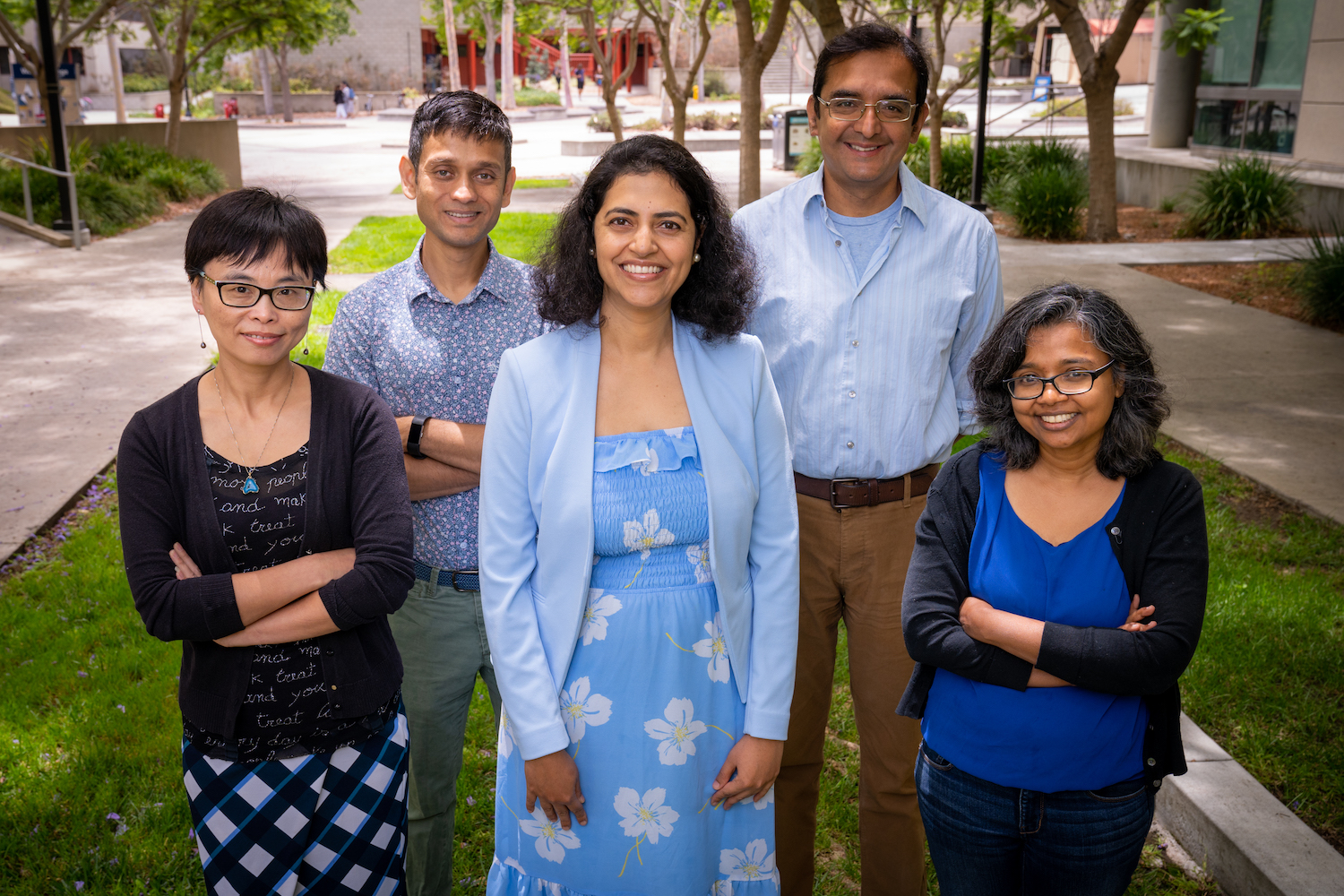
New $10M NSF-Funded Institute Will Get to the CORE of Data Science
A new National Science Foundation initiative has created a $10 million dollar institute led by computer and data scientists at University of California San DIego that aims to transform the core fundamentals of the rapidly emerging field of Data Science.
UC San Diego Computer Scientist Plays Major Role in $25M Cancer Grand Challenges Project
University of California San Diego computer scientist Vineet Bafna is part of a team of world-class researchers that has been awarded a five-year, $25 million Cancer Grand Challenges grant to learn how the destructive genetic lesion extrachromosomal DNA (ecDNA) influences numerous cancers and to identify possible therapies.
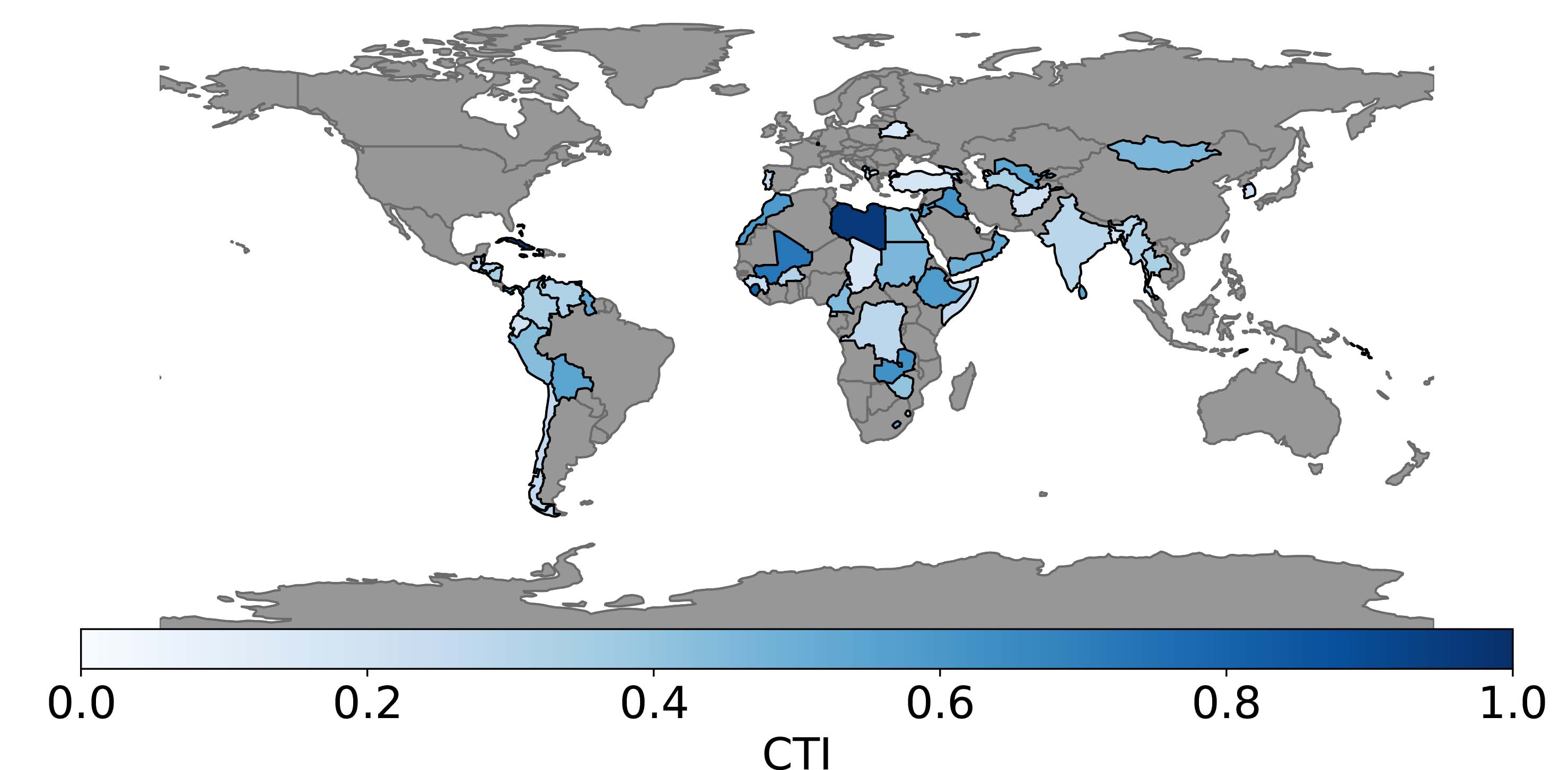
A quarter of world’s Internet users rely on infrastructure at high risk of attack
About a quarter of the world’s Internet users live in countries that are more susceptible than previously thought to targeted attacks on their Internet infrastructure. Many of the at-risk countries are located in the Global South.
Cleaning up Online Bots’ Act – and Speech
Researchers at the University of California San Diego have developed algorithms to rid speech generated by online bots of offensive language, on social media and elsewhere.
Want to throw off your chatbot? Use figurative language
Computer scientists recently examined the performance of dialog systems, such as personal assistants and chatbots designed to interact with humans. The team found that when these systems are confronted with dialog that includes idioms or similes, their performance drops to between 10 and 20 percent. The research team also developed a partial remedy.
A new solid-state battery surprises the researchers who created it
Engineers created a new type of battery that weaves two promising battery sub-fields into a single battery. The battery uses both a solid state electrolyte and an all-silicon anode, making it a silicon all-solid-state battery. The initial rounds of tests show that the new battery is safe, long lasting, and energy dense. It holds promise for a wide range of applications from grid storage to electric vehicles.
NSF makes $20 Million investment in Optimization-focused AI Research Institute led by UC San Diego
The National Science Foundation (NSF) announced today an investment of $220 million to establish 11 artificial intelligence (AI) institutes, each receiving $20 million over five years. One of these, The Institute for Learning-enabled Optimization at Scale (TILOS), will be led by the University of California San Diego.
World’s largest outdoor earthquake simulator undergoes major upgrade
A major upgrade to the world’s largest outdoor earthquake simulator reached a milestone mid-April when the facility’s floor–all 300,000 lbs of it–was put back into place. When completed this fall, the simulator will have the ability to reproduce multi-dimensional earthquake motions with unprecedented accuracy to make structures and their residents safer during strong shakes. Researchers lay out the details of the upgrade in a paper published recently in Frontiers in Built Environment.
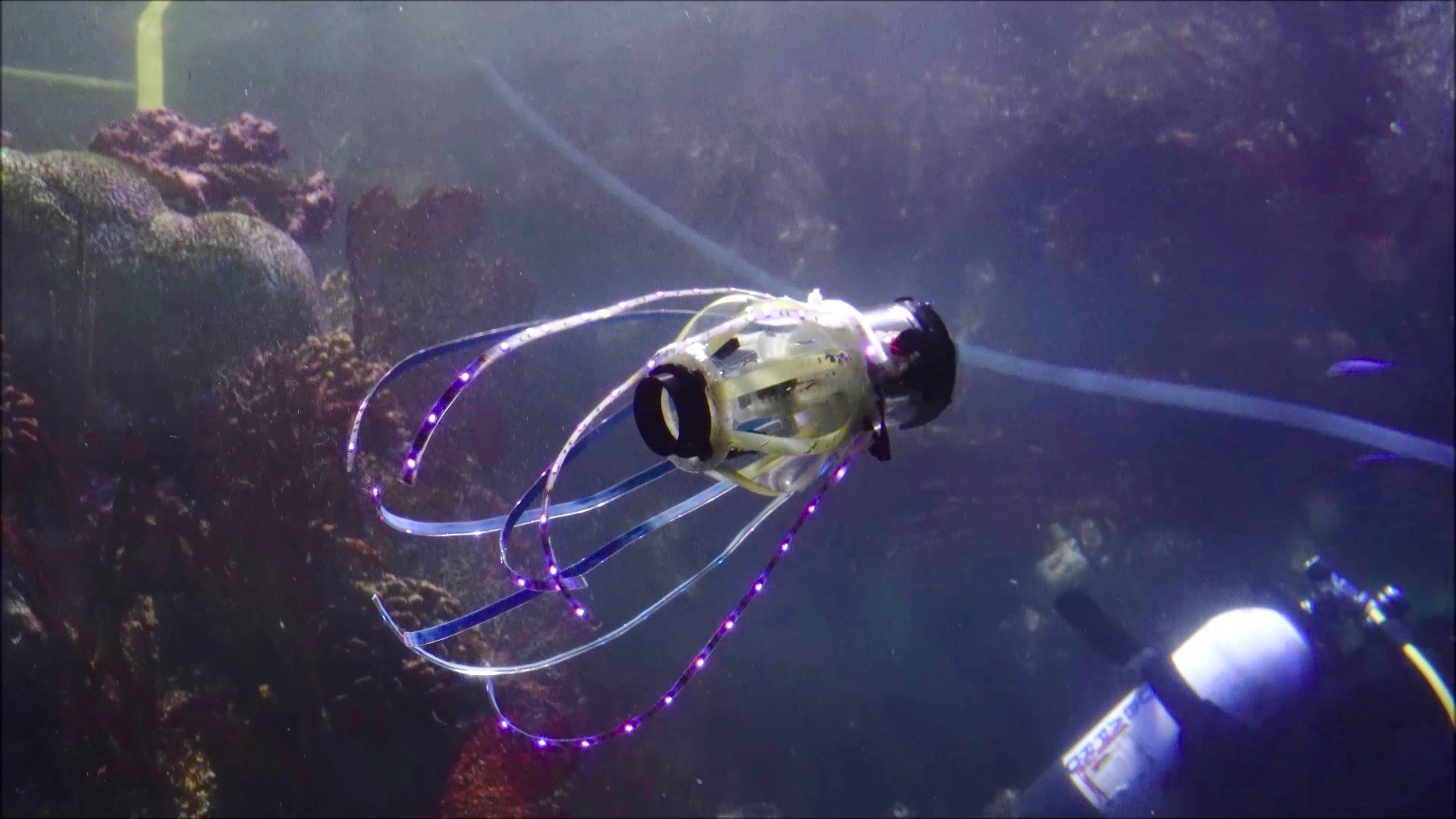
This ‘squidbot’ jets around and takes pics of coral and fish
Engineers at the University of California San Diego have built a squid-like robot that can swim untethered, propelling itself by generating jets of water. The robot carries its own power source inside its body. It can also carry a sensor, such as a camera, for underwater exploration. The researchers detail their work in a recent issue of Bioinspiration and Biomimetics.

UC San Diego Receives $1.6 Million to Better Prepare Young Adults for Engineering and Technical Careers
Longtime University of California San Diego supporter Buzz Woolley has pledged $1.6 million over the next three years to fund an innovative new initiative that will significantly expand the region’s engineering and technical workforce.
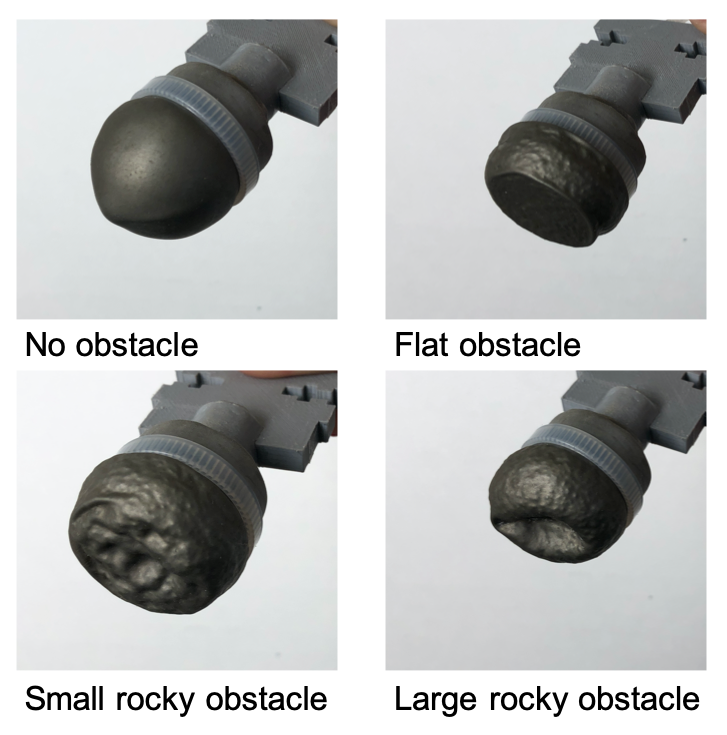
These flexible feet help robots walk faster
Roboticists at the University of California San Diego have developed flexible feet that can help robots walk up to 40 percent faster on uneven terrain such as pebbles and wood chips. The work has applications for search-and-rescue missions as well as space exploration.